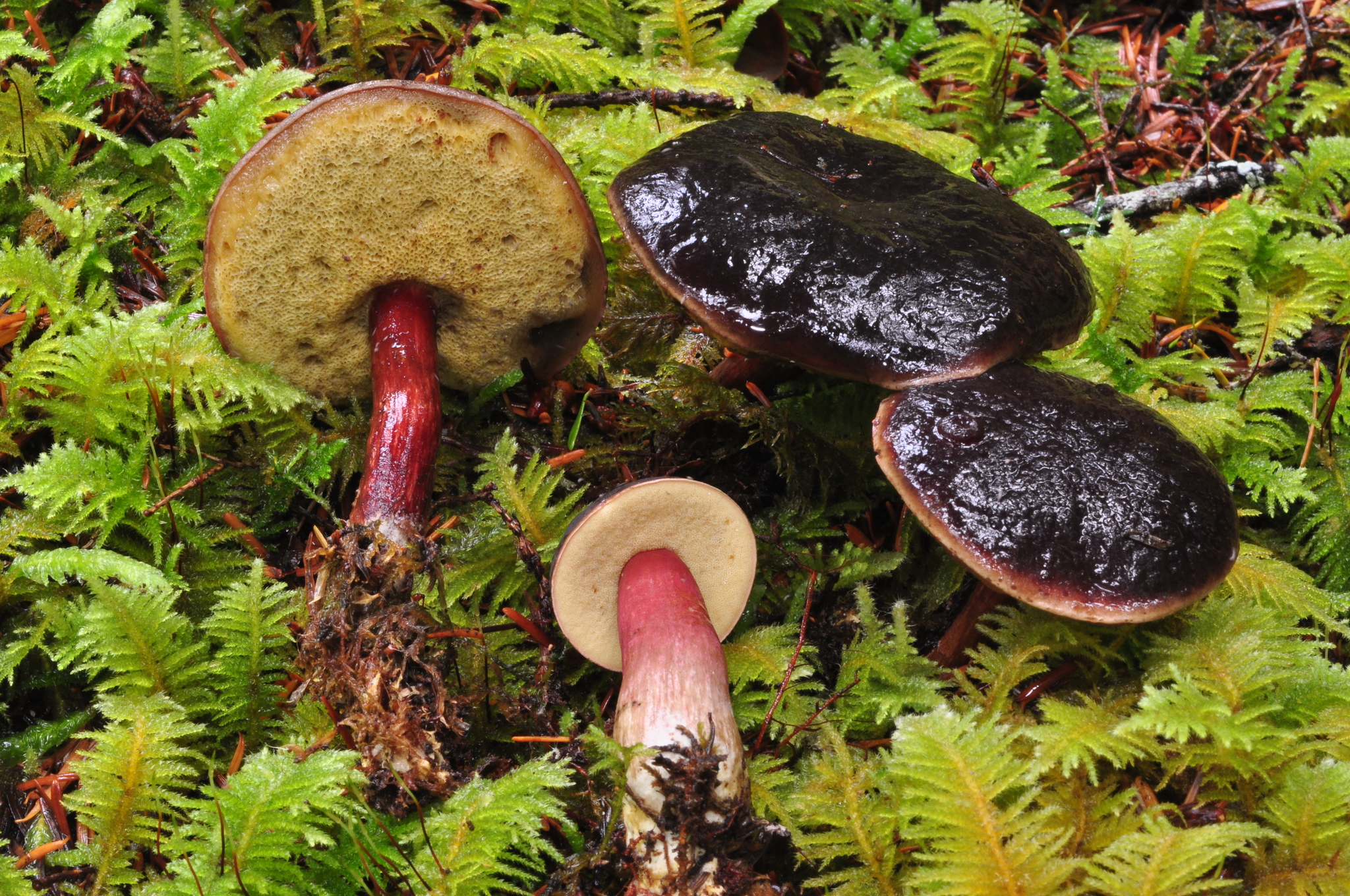- Proposed
- Under Assessment
- 3Preliminary Assessed
- 4Assessed
- 5Published
Xerocomellus zelleri (Murrill) Klofac
- Scientific name
- Xerocomellus zelleri
- Author
- (Murrill) Klofac
- Common names
- IUCN Specialist Group
 Mushroom, Bracket and Puffball
Mushroom, Bracket and Puffball- Kingdom
- Fungi
- Phylum
- Basidiomycota
- Class
- Agaricomycetes
- Order
- Boletales
- Family
- Boletaceae
- Assessment status
- Under Assessment
- Proposed by
- Noah Siegel
- Assessors
- Noah Siegel
- Comments etc.
- James Westrip
Assessment Notes
Justification
Xerocomellus zelleri appears to be a rare bolete in western North America, however data on this species is lacking due to confusion with X. atropurpureus; a recently described, and far more common ‘cryptic species’.
Xerocomellus zelleri appears to have a preference for mature and old growth forests, but based on current information, we do not know if it is restricted to such habitat. Until a determination can be made on habitat preferences, and records and trends tracked, we recommend listing it as Data Deficient (DD).
Taxonomic notes
Originally described as Ceriomyces zelleri (Murrill 1912) from a collection made in King County, Washington, USA, but known as Boletus zelleri for many years, before being transferred to Xerocomellus (Klofac 2011).
However, work on western North American Xerocomellus (Siegel and Schwarz 2016, Frank et al. 2020) has shown that what was called X. zelleri was in fact the rarer of two different species, and the more common and widespread species, X. atropurpureus was then described. See http://iucn.ekoo.se/iucn/species_view/821024/
Synonyms: Ceriomyces zelleri Murrill, Boletus zelleri (Murrill) Murrill, Xerocomus zelleri (Murrill) Snell, Boletellus zelleri (Murrill) Singer
Why suggested for a Global Red List Assessment?
Xerocomellus zelleri appears to be a rare bolete in western North America, however data on this species is lacking due to confusion with X. atropurpureus; a recently described, and far more common ‘cryptic species’.
Xerocomellus zelleri appears to have a preference for mature and old growth forests, but based on current information, we do not know if it is restricted to such habitat. Until a determination can be made on habitat preferences, and records and trends tracked, we recommend listing it as Data Deficient (DD).
Geographic range
From southern British Columbia, Canada, south in coastal forests into northern California, USA, and in the Cascade Range in Washington, USA. Actual distribution remains poorly known due to confusion of past records with the much more common Xerocomellus atropurpureus.
Population and Trends
Population and trends on this species are difficult to delimit, as most records pertain to the once cryptic Xerocomellus atropurpureus. It appears to be restricted to mature and old growth conifer forest, and is still locally common in old growth forests in Olympic National Park and other protected land on the Olympic Peninsula in Washington, USA, but appears to be rare across the rest of its range. Frank et al. (2020) state “Despite extensive collecting over a six-year period in, we encountered this species only five times”.
Although commonly observed in the old growth forest of Olympic National Park, it was not seen close by in the surrounding forests which have been logged. (N. Siegel field observations 2011, 2014, 2016)
Population Trend: Uncertain
Habitat and Ecology
Ectomycorrhizal with conifers, often fruiting on and around decaying moss covered stumps and logs, possibly restricted to mature and old growth forest.
Threats
This is a ectomycorrhizal fungus species dependent on living host trees for viability. The major threat to this species and its co-occurring co-generic brethren is habitat destruction, via the logging of old-growth forests to which it appears confined too. The extent of old growth forest in the Pacific Northwest of North America has declined 90% in the last century (Society of American Foresters 1984, Haynes 1986).
Conservation Actions
Research needed
New records of Xerocomellus zelleri need to be differentiate from X. atropurpureus. Detailed habitat notes with any new observations of this species to describe habitat limitations; tree association and if it needs mature or old growth forests to fruit.
Use and Trade
This species is edible, and occasionally collected for food.
Bibliography
Frank, J., Siegel, N., Schwarz, C., Araki, B. and Vellinga, E. 2020. Xerocomellus (Boletaceae) in western North America. Fungal Systematics and Evolution 6: 265-288.
Haynes, T.W. 1986. Inventory and value of old-growth in the Douglas-fir region. PNW-RN 437. U.S. Department of Agriculture, Forest Service, Pacific Northwest Research Station, Portland, OR.
Klofac, W. 1992. Xerocomus chrysenteron und ähnlich aussehende Röhrlinge. Österreichische Zeitschrift für Pilzkunde 1: 19–59.
Murrill, W.A. 1912. The Agaricaeae of the Pacific Coast: I. Mycologia 4 (4): 205–17.
Siegel, N. & Schwarz, C. 2016. Mushrooms of the Redwood Coast. Ten Speed Press: Berkeley, CA. 601 p.
Society of American Foresters. 1984. Scheduling the harvest of old growth : Old-growth forests in the Pacific Northwest : a position of the Society of American Foresters and Report of the SAF Task Force on Scheduling the Harvest of Old-Growth Timber. Bethesda, MD.
Country occurrence
Regional Population and Trends
| Country | Trend | Redlisted |
|---|


